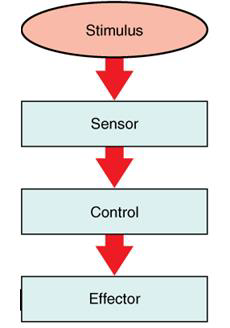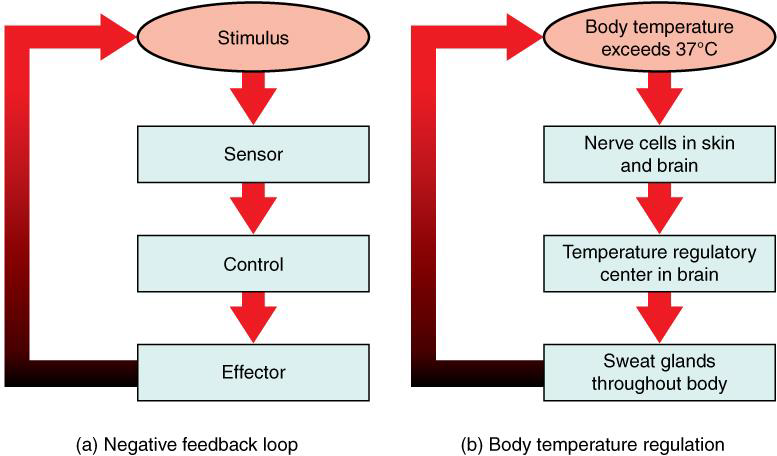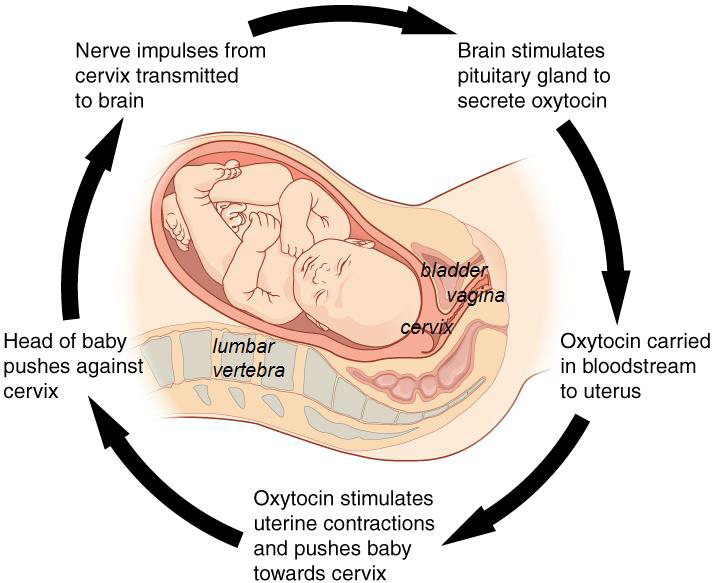1.3: Homeostasis and Control Systems
- Page ID
- 11099
learning objectiveS
- Define homeostasis
- Define control system and describe its components
- Define negative feedback and give one example using body temperature
- Define positive feedback and give one example; also, compare and contrast positive and negative feedback in terms of the relationship between response and result
Homeostasis (homeo- = "like, resembling, of the same kind"; stasis = “standing still”) means to maintain body functions within specific livable ranges, adjusting to internal and external changes. Temperature, nutrient concentration, acidity, water, sodium, calcium, oxygen, as well as blood pressure, heart rate, and respiratory rate are some of the internal body variables that must remain within a certain range. When the body fails to maintain internal body variables within a certain range, normal function is interrupted, and disease or illness may result.
concepts, terms, and facts check
Study Questions Write your answer in a sentence form (do not answer using loose words)
1. Which are some of the internal body variables that must remain within a certain range?
2. What happens when internal body variables are out of a certain range?
3. What is homeostasis?
Anything that must be maintained in the body within a normal range must have a control system. A control system consists of four components:
Stimulus, or physiological variable that changes, is the item to be regulated. Variable in the broad sense is a value that varies or changes. Two examples of variables that change are body temperature and blood glucose. Anything that can be measured and varies is a variable.
Sensor, or sensory receptor, is the cell, tissue, or organ that senses the change in the stimulus or physiological variable. For example, sensory nerve cell endings in the skin sense a raise of body temperature, and specialized cells in the pancreas sense a drop in blood glucose. The sensory receptor or sensor provides input to the control center.
Control center is the body structure that determines the normal range of the variable, or set point. For example, an area of the brain called the hypothalamus determines the set point for body temperature (around 37°C, or 98.6°F), and specialized cells in the pancreas determine the set point for blood glucose (around 70-100mg/dL). To maintain homeostasis, the control center responds to the changes in the stimulus received from the sensor by sending signals to effectors.
Effector is the cell, tissue, or organ that responds to signals from the control center, thus providing a response to the stimulus (physiological variable that changed) in order to maintain homeostasis. For example, sweat glands (effectors) throughout the body release sweat to lower body temperature; and cells of the liver (effectors) release glucose to raise blood glucose levels. See the four components of a control system in below Figure \(\PageIndex{1}\) below.

Figure \(\PageIndex{1}\) Components of a Control System: stimulus or physiological variable that changes, sensor or sensory receptor, control center, and effector
Concepts, terms, and facts check
Study Questions Write your answer in a sentence form (do not answer using loose words)
1. What are the four components of a control system?
2. Define stimulus using two examples
3. What is a sensor (or sensory receptor)?
4. What is a control center?
5. What is a set point?
6. What is an effector?
Most control systems maintain homeostasis by a process called negative feedback. Negative feedback prevents a physiological variable or a body function from going beyond the normal range. It does this by reversing a physiological variable change (stimulus) once the normal range is exceeded. The components of a negative feedback are the sensor (or sensory receptor), the control center (where the set point is), and the effector. See figure \(\PageIndex{2}\) below.

Figure \(\PageIndex{2}\) In a negative feedback loop, a stimulus—a deviation from a set point—is resisted through a physiological process that returns the body to homeostasis. (a) A negative feedback loop has four basic parts. (b) Body temperature is regulated by negative feedback.
concepts, terms, and facts check
Study Questions Write your answer in a sentence form (do not answer using loose words)
1. What is negative feedback?
Positive feedback is a mechanism that intensifies a change in the body’s
physiological condition rather than reversing it (as a negative feedback mechanism does). A deviation from the normal range results in more change, and the system moves farther away from the normal range. Positive feedback in the body is normal only when there is a definite end point.
Childbirth is one example of a positive feedback loop that is normal but is activated only when needed. The first contractions of labor (stimulus) push the baby toward the cervix (the lowest part of the uterus). The cervix contains stretch-sensitive cells (sensors) that monitor the degree of stretching. These nerve cells send messages to the brain (control center), which in turn causes the pituitary gland at the base of the brain to release the hormone oxytocin into the bloodstream. Oxytocin causes stronger contractions of the smooth muscles (effectors) in the uterus, pushing the baby further down the birth canal. This causes even greater stretching of the cervix. The cycle of stretching, oxytocin release, and increasingly more forceful contractions stops only when the baby is born. At this point, the stretching of the cervix halts, stopping the release of oxytocin. The end
result in a positive feedback loop is to reach an end point (delivery) as opposed to reach a set point as in negative feedback. See figure \(\PageIndex{3}\) below for an example, and table \(\PageIndex{1}\) for a comparison between negative feedback and positive feedback.

Figure \(\PageIndex{3}\) Normal childbirth is driven by a positive feedback loop. A positive feedback loop results in a change in the body’s status, rather than a return to a set point.
| Negative Feedback | Positive Feedback | |
|---|---|---|
| Example | Regulation of body temperature or blood glucose | Normal childbirth |
| Response | Reverses a change in a physiological condition | Intensifies a change in physiological condition |
| Result | Return to a set point | Reach an end point |
| Overall | Provide stability | Accelerates a process to completion |
Concepts, terms, and facts check
Study Questions Write your answer in a sentence form (do not answer using loose words)
1. What is positive feedback?
2. How are negative and positive feedback different (Compare response, result, and overall)

